 The Meatrix and Meatrix 2 were produced in part by Sustainable Table.
The Meatrix and Meatrix 2 were produced in part by Sustainable Table.Your author has a fine regard for folks who don't just
 The Meatrix and Meatrix 2 were produced in part by Sustainable Table.
The Meatrix and Meatrix 2 were produced in part by Sustainable Table. Back in January I posted a teaser for the sequel of the award-winning web animation The Meatrix.
Back in January I posted a teaser for the sequel of the award-winning web animation The Meatrix.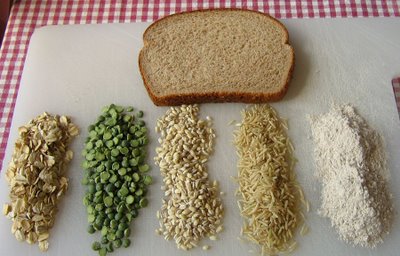


 I hesitated showing a picture of them. They look so scabby. Google "dried pears" and this sure isn't what you'll see. But they're the essence of pear! And when I'm craving dried fruit, I'm not craving sulfur dioxide, or sodium metabisulfite ... at least I don't think I am. These are preserved with a little vitamin C which cuts down on browning and retains more nutrients than non-preserved fruit.
I hesitated showing a picture of them. They look so scabby. Google "dried pears" and this sure isn't what you'll see. But they're the essence of pear! And when I'm craving dried fruit, I'm not craving sulfur dioxide, or sodium metabisulfite ... at least I don't think I am. These are preserved with a little vitamin C which cuts down on browning and retains more nutrients than non-preserved fruit.
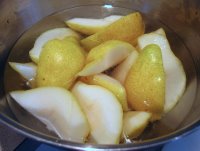
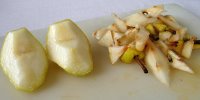 Note: Don't use bottled lemon juice. You're adding the lemon for its antioxidant properties and vitamin C which are reduced in packaged products. Note the reduced browning of the treated pears on the left vs. the untreated cores on the right. (Click pic for larger.)
Note: Don't use bottled lemon juice. You're adding the lemon for its antioxidant properties and vitamin C which are reduced in packaged products. Note the reduced browning of the treated pears on the left vs. the untreated cores on the right. (Click pic for larger.)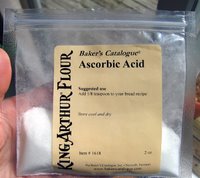 I use the same ascorbic acid that I add to yeasted bread recipes. (Available mail-order from the Baker's Catalogue, $3.25 for 1/4 lb.)
I use the same ascorbic acid that I add to yeasted bread recipes. (Available mail-order from the Baker's Catalogue, $3.25 for 1/4 lb.)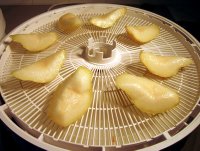
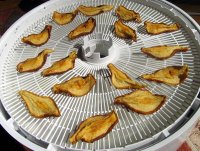
 Pursuant to the discovery of the third confirmed case of BSE in 27 months, the USDA has sent signals that it has decided to go ahead with plans to scale back testing.
Pursuant to the discovery of the third confirmed case of BSE in 27 months, the USDA has sent signals that it has decided to go ahead with plans to scale back testing."This would be a tenth of a percent of all animals slaughtered. This starts to be so small that in our opinion, it approaches a policy of don't look, don't find."How the US Rates Among Nations1
- Jean Halloran, director of food policy initiatives at Consumers Union
 I really wanted this study to vindicate my claim that a gram or more of supplemental calcium (Ca) a day couldn't possibly be what the evolutionary king intended, and therefore couldn't possibly be a failsafe bone-saving device. I really, really wanted to cry "I told you so!"
I really wanted this study to vindicate my claim that a gram or more of supplemental calcium (Ca) a day couldn't possibly be what the evolutionary king intended, and therefore couldn't possibly be a failsafe bone-saving device. I really, really wanted to cry "I told you so!"Since participants were not restricted from taking personal calcium or vitamin D supplements, they had a relatively high calcium and vitamin D intake at enrollment and intake rose even higher during the trial so the impact of study supplementation may have been muted.2. Because I'm not convinced that doctors, dietitians, or other delegates of health, not least of which calcium supplement makers ($993 million from sales in 2004), will stop recommending sizeable daily doses of Ca based on this uncertain outcome. Since the study was too big to be repeated anytime soon, if you have a political, economic, or career-minded interest in seeing Ca venerated, you'll spin these results to your liking:
- Jean Wactawski-Wende, PhD. Study’s lead investigator. From NIH press release.
“The study’s findings of slowed bone loss and the reduction in hip fractures for some groups suggest a role for these supplements in preventing hip fracture in generally healthy postmenopausal women and support the current Surgeon General’s recommendations for these nutrients.”I personally have a tough time reconciling how the study's findings that CaD did not significantly reduce fractures equates to "support [for] the current Surgeon General’s recommendations for these nutrients". Oh, the politics of nutrition.
- Joan McGowan PhD. Senior scientific editor of the Surgeon General’s report on bone health and co-author of this paper.
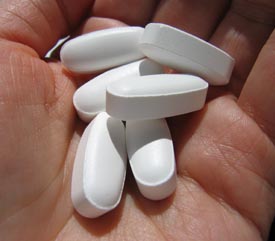 I know I'm in the minority, especially among my health-community peers, but I hold to the belief that there are lots of things a woman can do to protect her bones other than engage in lopsided pill-popping. It looks like the president of the National Osteoporosis Foundation, Dr. Ethel Siris, is sidling up to that idea:
I know I'm in the minority, especially among my health-community peers, but I hold to the belief that there are lots of things a woman can do to protect her bones other than engage in lopsided pill-popping. It looks like the president of the National Osteoporosis Foundation, Dr. Ethel Siris, is sidling up to that idea:"Enough is enough," Dr. Siris said. "Too much of a good thing isn't a good thing."I guess this leaves me still sitting on my hands waiting for someone to show why my breakfast doesn't have to look like NASA space food rations.
"WASHINGTON -- The Bush administration is trying to reassure Japan and other foreign customers of American beef while awaiting further tests on a suspected case of mad cow disease."How about a little homeland reassurance, guys?

"Public health is not at risk for the fatal brain disease because the infected cow did not enter the food chain, federal officials say."I guess that's settled.
 If my cholesterol was high, and my attempts at diet and exercise weren't successful enough to lower my numbers down to where the NIH's National Cholesterol Education Program recommends (total cholesterol: less than 200, LDL: less than 100, HDL: above 40), and I was facing a well-intentioned physician who was scribbling a script for a statin ... I might try policosanol first.
If my cholesterol was high, and my attempts at diet and exercise weren't successful enough to lower my numbers down to where the NIH's National Cholesterol Education Program recommends (total cholesterol: less than 200, LDL: less than 100, HDL: above 40), and I was facing a well-intentioned physician who was scribbling a script for a statin ... I might try policosanol first.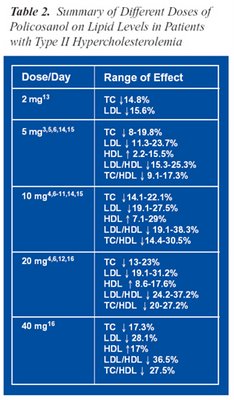 Rather than fill a paragraph with lots of numbers, I've swiped a table from Mark Janikula's outstanding review article Policosanol: A New Treatment for Cardiovascular Disease? that summarized doses and their effects (see right). I was planning to list citations for supportive research at the bottom of this post, but since Mr. Janikula did it so well in his review, I'll refer you there.
Rather than fill a paragraph with lots of numbers, I've swiped a table from Mark Janikula's outstanding review article Policosanol: A New Treatment for Cardiovascular Disease? that summarized doses and their effects (see right). I was planning to list citations for supportive research at the bottom of this post, but since Mr. Janikula did it so well in his review, I'll refer you there.